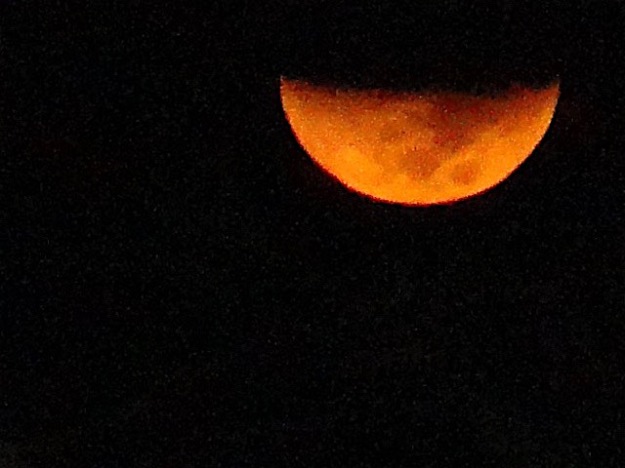What shadow bigger than a lunar eclipse? I am lucky enough to have seen the eclipse of two blood moons in Mexico. Below are photos or links to photos of each, along with a rewrite of a poem I wrote after witnessing the first one.

Lunar Eclipse
Last night I rose to watch the full eclipse––
a blood orange moon, full in the dark night sky,
around it, scattered stars and tall palm tips.
It was as though in this world, only I
watched the last fingernail of glowing moon,
chewed at by shadow, slowly wane and die.
And then the night birds with their lonely croon
gave timbre to this darkened night soon joined
by lonely burro, braying for the moon
Perhaps they mourned for vision now purloined
or simply sang for joy of adding to
the beauty of this dark moon newly coined.
Then once again the moon’s edge came to view.
Earth moved aside in favor of the sun
and for an hour, I watched as moonlight grew.
I sought my bed, the pageant not yet done,
as light increased and shadow slowly waned.
Inevitably, once more light had won.
The ending known, no mystery remained.
This poem is written in terza rima, a form invented by Dante and used in The Divine Comedy. It consists of three-line stanzas, with a “chained” rhyme scheme. The first stanza is ABA, the second is BCB, the third is CDC, and so on. No particular meter is necessary, but English poets have tended to default to iambic pentameter. One common way of ending a terza rima poem is with a single line standing on its own, rhyming with the middle line of the preceding three-line stanza.
See more blood moon photos here: https://judydykstrabrown.com/2015/09/27/eclipse-of-the-blood-moon-over-mexico/
And smaller shadows here: https://judydykstrabrown.com/2015/09/03/reflections-shadows-cees-black-and-white-challenge/
If you want to write to this prompt, you can post what you’ve written here: https://dailypost.wordpress.com/prompts/shadow/




